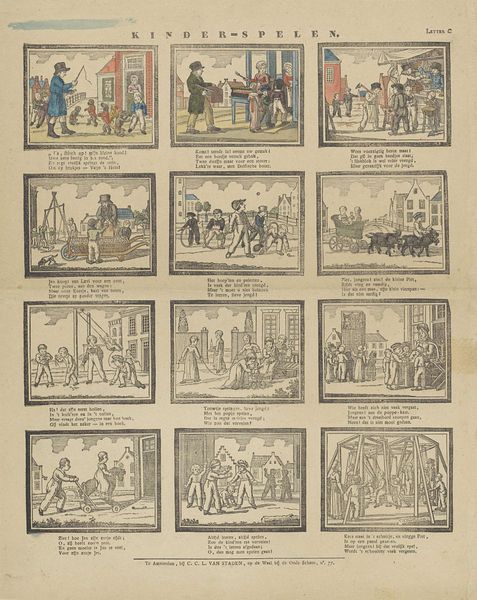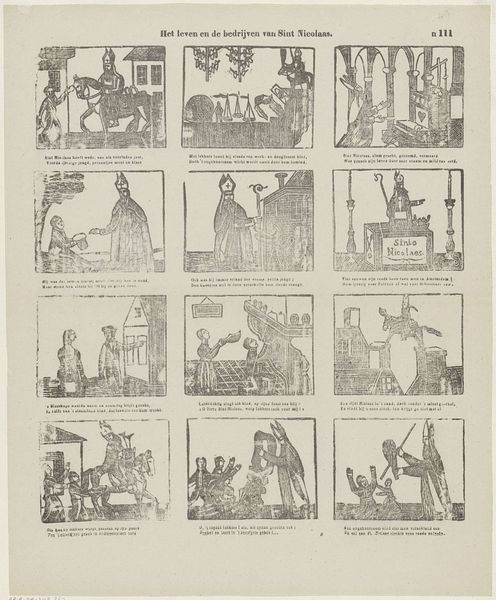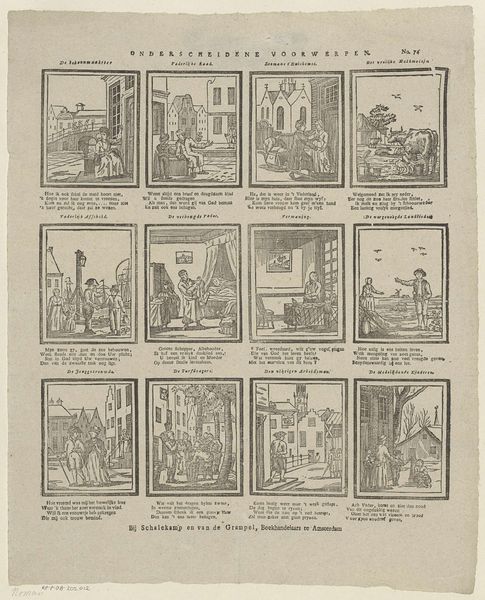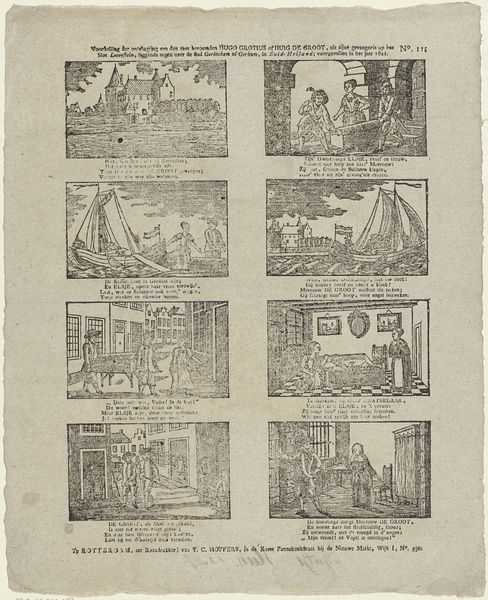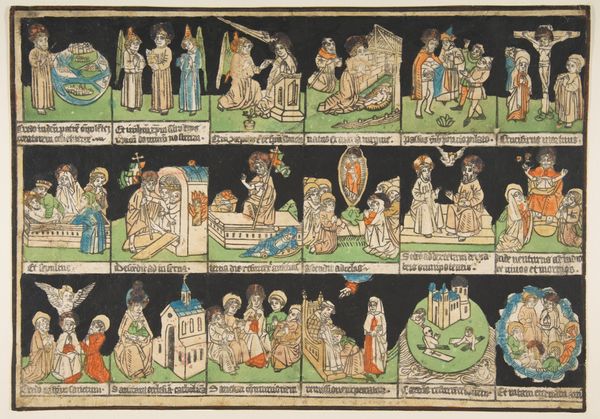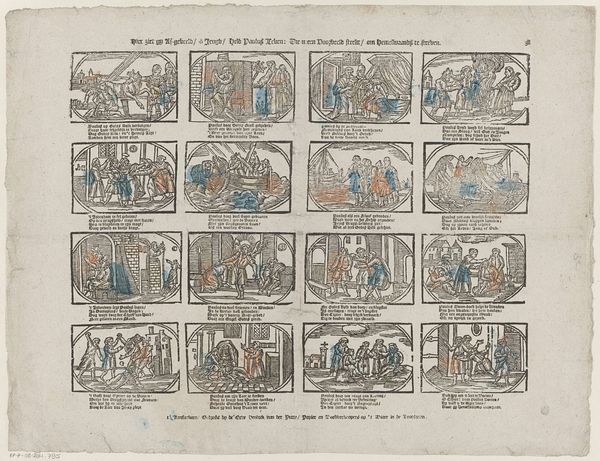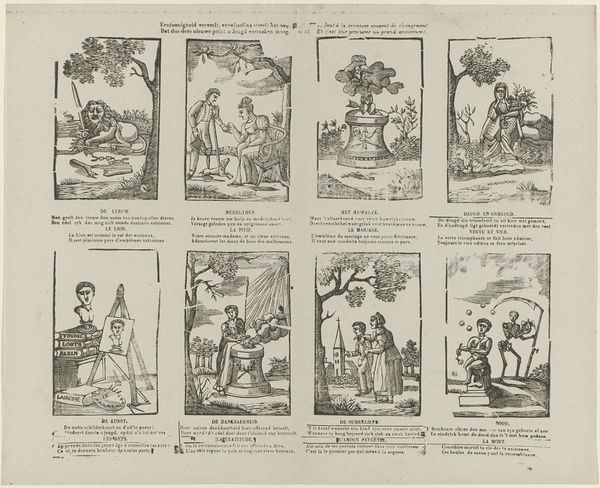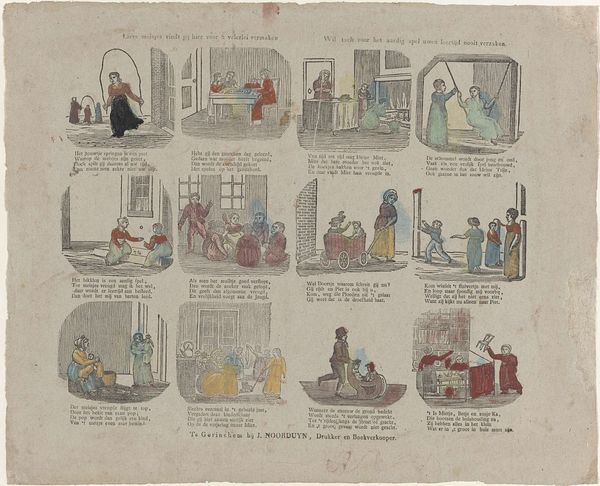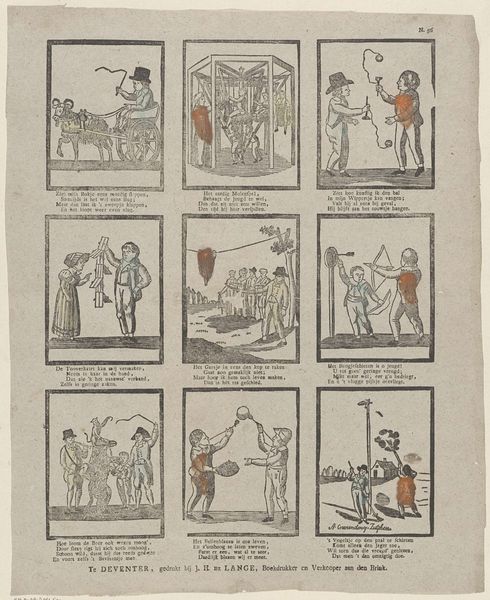
drawing, print, engraving
#
drawing
#
narrative-art
# print
#
folk-art
#
genre-painting
#
engraving
Dimensions: height 335 mm, width 395 mm
Copyright: Rijks Museum: Open Domain
Editor: This delightful engraving, "Ziet deze prentjes, lieve kindren (...)", likely created between 1791 and 1812 by Jacobus Thompson, presents a series of charming scenes. There's something quite captivating about the way these little vignettes are framed; they remind me of looking through a child's storybook. As someone relatively new to art history, I’m curious about what this artwork conveys to you? Curator: It speaks volumes about the public role of art at the turn of the 19th century. These kinds of prints, disseminated widely, functioned as accessible visual culture. Consider how the choice of scenes - genre paintings depicting everyday activities, folk art traditions – shaped the worldview of its viewers. Were they aimed at children, as the title suggests? What did these images teach them about the social order? Editor: The title seems like a straightforward hint, but were images for children common at that time? Was it trying to instill moral lessons, or was there another objective? Curator: Images aimed specifically at children were gaining traction, but we must analyze beyond face value. This print presents occupations and perhaps even social classes. How are these groups depicted? What social messages are implicitly reinforced? Think about who controlled the means of production for such images and how their agendas may be present in the imagery itself. Editor: It's intriguing to consider that this seemingly innocent print might subtly promote existing power dynamics, showing people at work, almost to illustrate their value. So, beyond their visual charm, these prints functioned as vehicles for reinforcing social structures. I never would have seen it that way. Thanks for the new insight! Curator: Precisely. By interrogating the socio-political forces at play, we move beyond appreciating just the artistic execution to understanding the historical weight and purpose of visual culture.
Comments
No comments
Be the first to comment and join the conversation on the ultimate creative platform.


